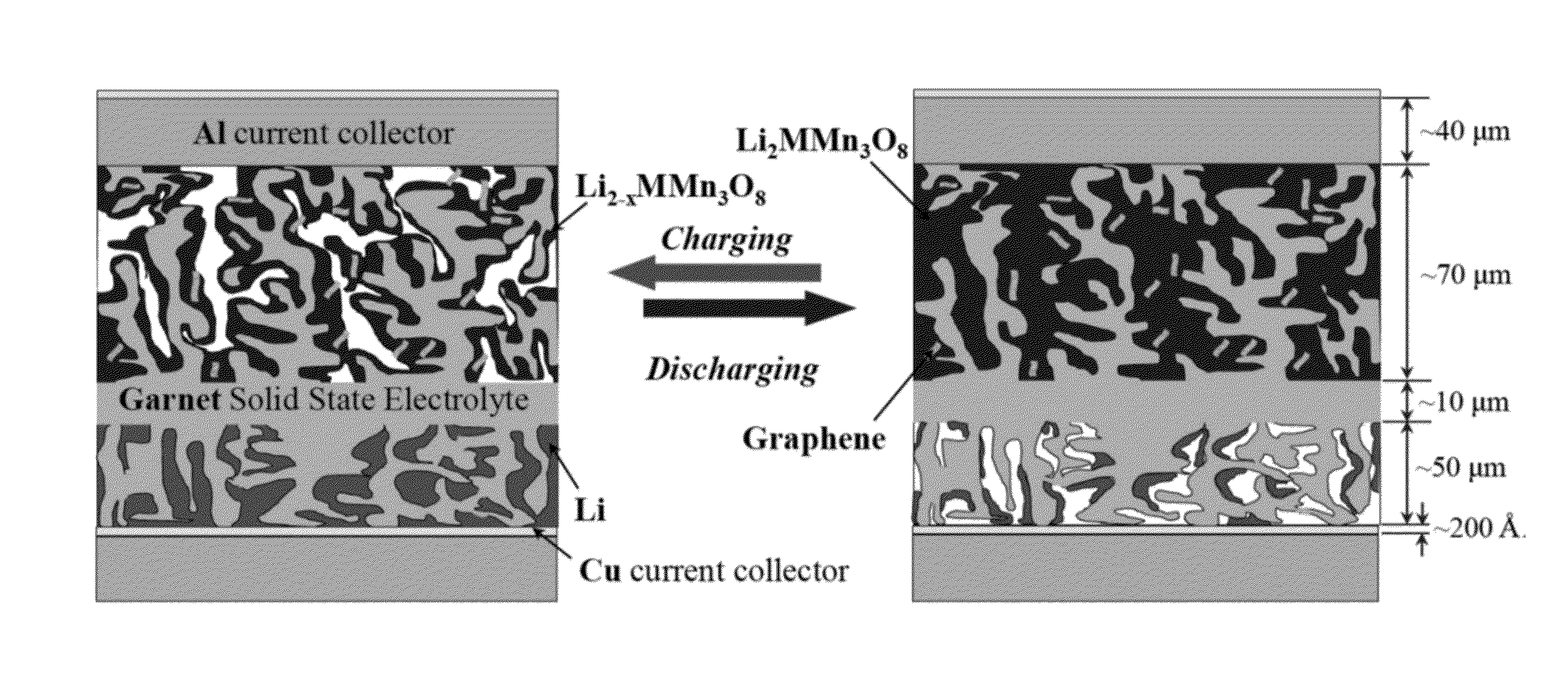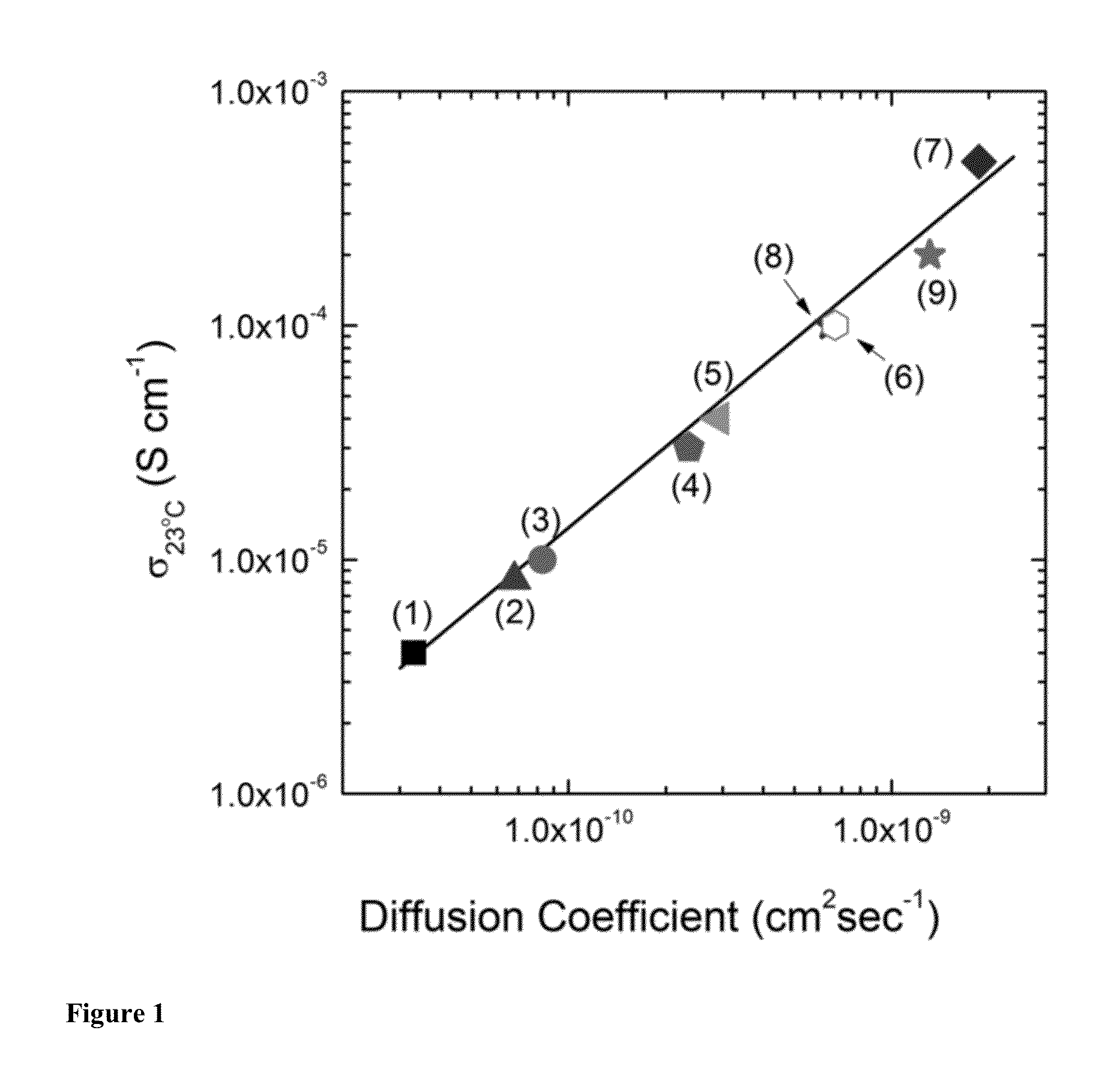Ion conducting batteries with solid state electrolyte materials
a technology of solid-state electrolyte and ion-conducting batteries, which is applied in the direction of cell components, sustainable manufacturing/processing, and final product manufacturing, etc., can solve the problems of poor electrochemical stability of organic electrolyte, poor power/energy density limitations, and other ion-conducting electrolytes that have similar problems
- Summary
- Abstract
- Description
- Claims
- Application Information
AI Technical Summary
Benefits of technology
Problems solved by technology
Method used
Image
Examples
example 1
[0064]The following is an example describing the solid-state lithium ion batteries of the present disclosure and making same.
[0065]The flammable organic electrolytes of conventional batteries can be replaced with non-flammable ceramic-based solid-state electrolytes (SSEs) that exhibit, for example, room temperature ionic conductivity of ≧10−3 Scm−1 and electrochemical stability up to 6V. This can further allow replacement of typical LiCoO2 cathodes with higher voltage cathode materials to increase power / energy densities. Moreover, the integration of these ceramic electrolytes in a planar stacked structure with metal current collectors will provide battery strength.
[0066]Intrinsically safe, robust, low-cost, high-energy-density all-solid-state Li-ion batteries (SSLiBs), can be fabricated by integrating high conductivity garnet-type solid Li ion electrolytes and high voltage cathodes in tailored micro / nano-structures, fabricated by low-cost supported thin-film ceramic techniques. Such...
PUM
 Login to View More
Login to View More Abstract
Description
Claims
Application Information
 Login to View More
Login to View More - R&D
- Intellectual Property
- Life Sciences
- Materials
- Tech Scout
- Unparalleled Data Quality
- Higher Quality Content
- 60% Fewer Hallucinations
Browse by: Latest US Patents, China's latest patents, Technical Efficacy Thesaurus, Application Domain, Technology Topic, Popular Technical Reports.
© 2025 PatSnap. All rights reserved.Legal|Privacy policy|Modern Slavery Act Transparency Statement|Sitemap|About US| Contact US: help@patsnap.com



